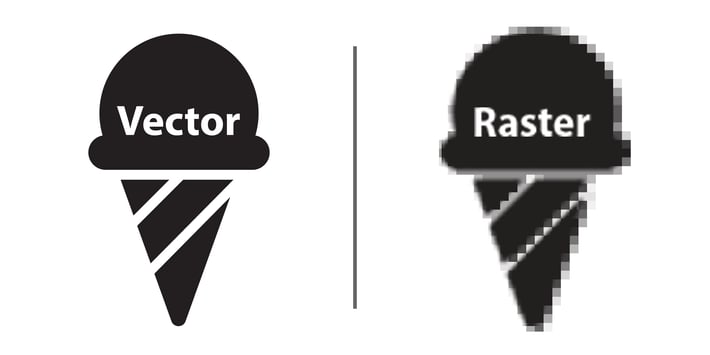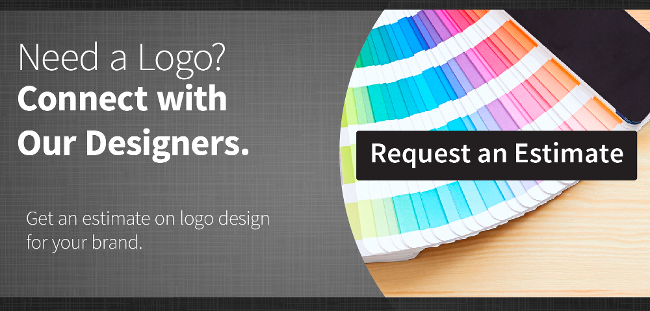
Companies that are starting out or in the process of re-branding are faced with a lot of expenses all at once, and it can be a great temptation to cut corners by going with a low-priced logo designer. They're all over the Internet, and, hey, how hard can it really be? You just need something that looks cool and catches the eye, right? Sorry, not quite.
Logos find their roots in the centuries-old tradition of heraldry. Centuries ago, people would be able to know immediately whose castle this was, or whose army was charging at them, by the heraldic device flown on a flag or carried on a banner, or embroidered onto their clothing. Modern day logos are heraldic devices for businesses, and like those noble devices of by-gone times, their purpose is to be immediately recognizable from a distance, and to stand as a unique identifier in a variety of media and applications, and all of this is accomplished through effective use of color and design. There were Heraldry apprenticeships to learn the research and design portion of the process, while master scribes taught their apprentices how to mix pigments and render the heraldic designs in the most consistent manner possible.Today, graphic designers have much more sophisticated tools at their disposal to create effective logos for their clients, but their goal is still the same: to achieve a clean design that is immediately recognizable, can be accurately reproduced on a variety of media, and which stands out as unique. Think about the most iconic logos you can picture: Clean, simple, memorable.
Cheap Logos Can Cost Much More Than You Think
Your company's logo is a cornerstone in your brand marketing efforts. If it fails to achieve the following metrics, your company's marketing campaigns will always be working at a disadvantage, which ultimately hurts your bottom line.
- Originality – Whose shoes are those with the 'swoosh' on them? Nike. You don't even have to think twice when you see that swoosh, even when the color varies. It's a ridiculously simple logo, yet so effective that it doesn't even need the brand name next to it for people to know what it represents. If you walk around a trade show floor today, you're going to see a lot of logos styled in a combination of blue and green, a flood of oval-shaped logos, and an overwhelming number of blue and green, oval-shaped logos. Those logos are not serving their intended purpose, because they do not stand as a unique identifier.
Cheap logo designs often rely on stock images which are public domain or available at low cost. If your designer creates a logo for your company using a stock image, there's nothing to prevent another designer or company from using that same image in another logo design. In the worst case, a cut-rate logo designer may use an image that's not licensed for commercial use, or is not specifically licensed for use in logos, and your company will be left liable. Unfortunately, this happens with surprising frequency, and when it does, there's no recourse but to have a new, truly original logo designed. You will also have to pay the costs of having new collateral printed, and a marketing campaign to build recognition for your new visual branding.

- Reproducibility & Scalability – Over the course of its useful life, your logo will probably be printed or displayed at many different sizes and on various media. It's critical that your logo be designed in a way that it will be recognizable, crisp, and polished-looking at any size from a business card to a billboard, and that it uses colors which can be accurately reproduced in print, as well as on a monitor. Effective branding depends on consistency, especially where color is concerned. Because digital displays can render millions of colors, it's easy to create a logo with attractive and unique colors, but the majority of those colors cannot be reproduced accurately in print. A professional graphic designer, though, will create a logo using colors that can also be printed on paper or fabric using CMYK (Cyan, Magenta, Yellow, Black) 4-color printing, or a spot color process like Pantone, which can render a wider range of colors accurately, at a greater cost. It's important to take your printing budget into consideration before making color choices, and a professional graphic designer will consult with you to learn what will work best for your company before finalizing a design. Using professional design software that creates vector graphics, instead of blocky raster-based graphics, ensures a clear image, even when you need dramatic re-scaling. These are just some of the ways in which a trained designer ensures that your logo will render or print correctly, in all sizes. Having to re-print incorrect colors, blocky or blurry images gets expensive, and in order to correct the issues, you will ultimately have to pay to have the images re-designed properly.
- Longevity – Good logo design also takes future needs into account. When you've invested your time and money into building recognition for your visual branding, it's a costly process to start over with new visual branding later. The best logos are designed so that they can be updated later with minimal changes, and without breaking the recognisability you've worked so hard to build.
Do It Right The First Time
Cut-rate logo designers often speed their workflow by using a boiler-plate set of generic logo shapes and stock images to create as many logos as possible in a short time. At best, this will leave you with a logo that fails to distinguish itself among a field of other cookie-cutter logos; at worst, your company may find itself involved in legal action over infringing on another logo. When you work with a professional logo designer, you'll get an effective and polished logo that represents your brand in a unique way that customers will grow to recognize and remember.




